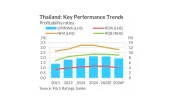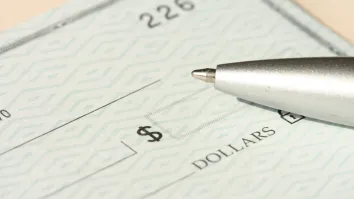
Softening property demand could push up Taiwan’s bad loans
Potential losses could be absorbed by the banks’ core earnings, S&P said.
Softening demand in Taiwan’s property market could push up the bad loans of banks over the next 1-2 years, says S& Global Ratings.
Most lenders should have good capital buffers and could withstand moderate volatility in the domestic property market, the ratings agency said in the April 2025 report, “Taiwan Banks Could Withstand A Potential Property Downturn.”
“The banks have generally tightened their appetite for property-related lending under regulatory exposure limits in recent months. This should help to prevent further lending concentration in the sector amid less-certain market conditions,” S&P said.
Nonperforming loans (NPLs) for mortgages are likely to stay below 0.2% of total loans, and real estate NPLs below 0.5% for the next two years, it added.
Potential credit losses associated with property market volatility could be absorbable by banks' core earnings, it added.
The loan-loss reserves applied to real estate loans would also act as a buffer, S&P said.
Taiwanese banks are also likely to slow their mortgage lending growth to 3%-5% through 2026, after the “unusually strong” 10.4% expansion in 2024.
“We do not expect the strong momentum of mortgage lending growth in 2024 will persist over the next few quarters. The government-led preferential housing loan program for younger buyers largely explained the boost in transactions, which drove growth in mortgage lending,” S&P said.
Under the program, eight state-owned banks offer what S&P called “quite flexible and favorable terms” for qualified applicants.
Terms include a lower lending rate subsidized by the government, tenors of up to 40 years, and a grace period on the repayment of loan principal of up to five years.
Banks' property-related exposure—including home mortgages, housing-repair loans and real estate development and construction lending—remain at roughly a third of total loans, the report said.
The regulator has required banks to set aside a 1.5% credit loss reserve for mortgage and real estate lending, higher than the 1% general reserve for other loans.
The strong gains in home prices in recent years have contributed to low delinquency rates for real estate development and construction loans.



















 Advertise
Advertise









